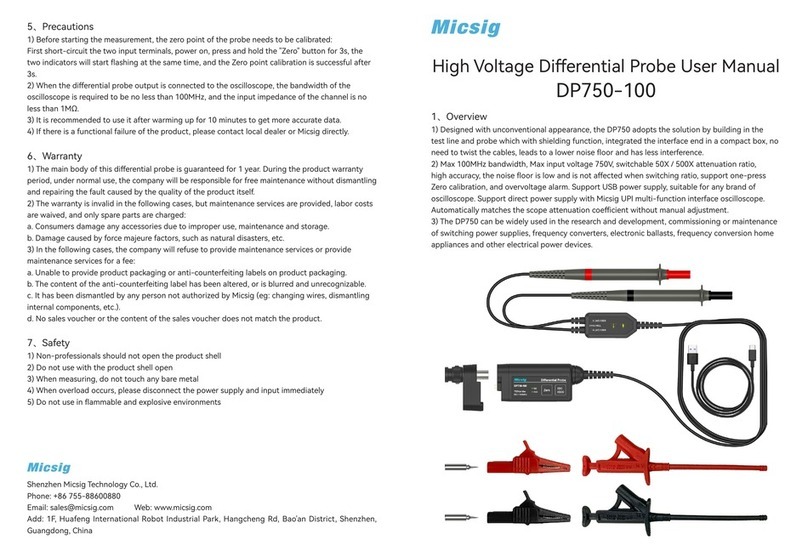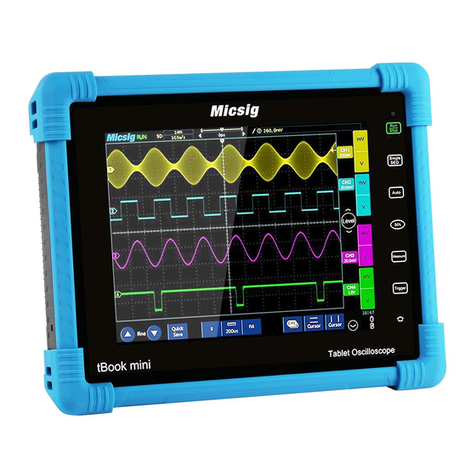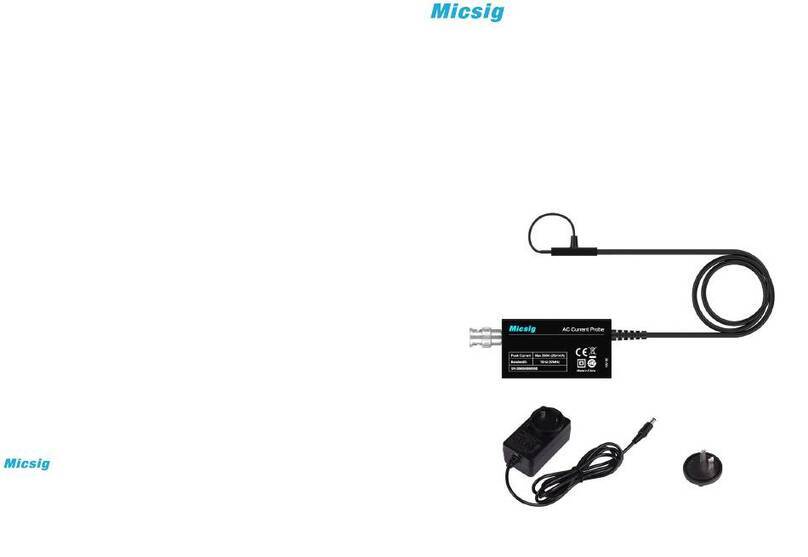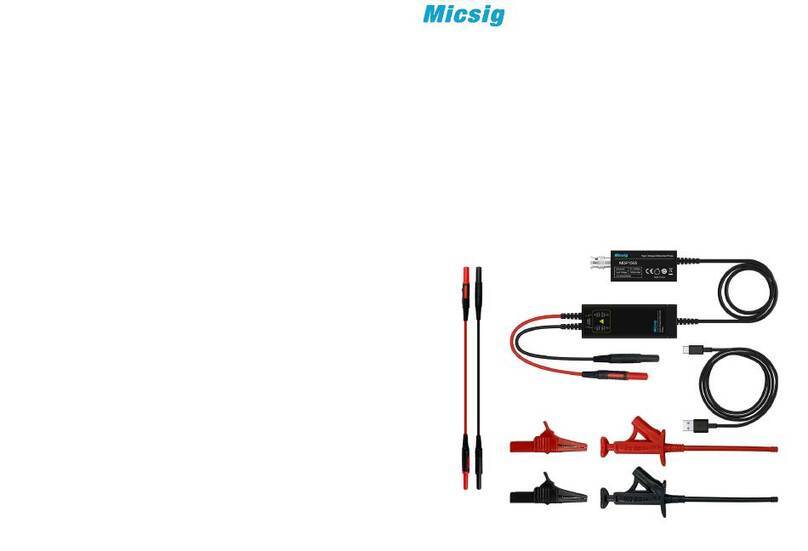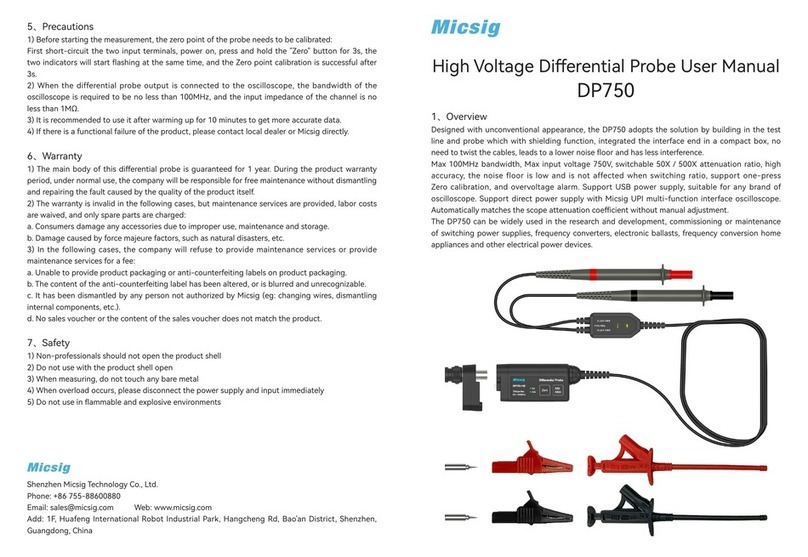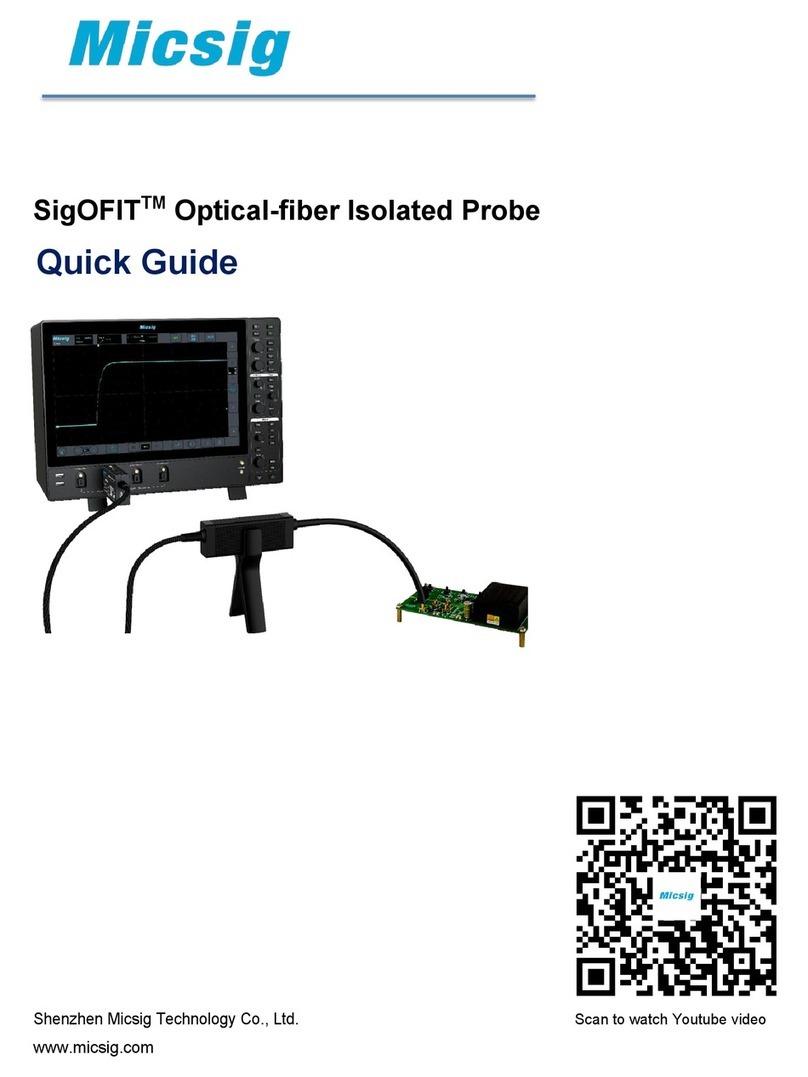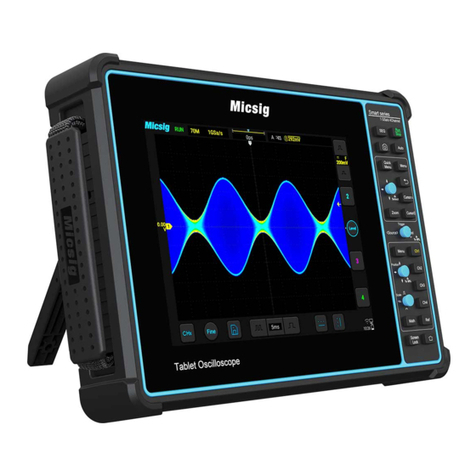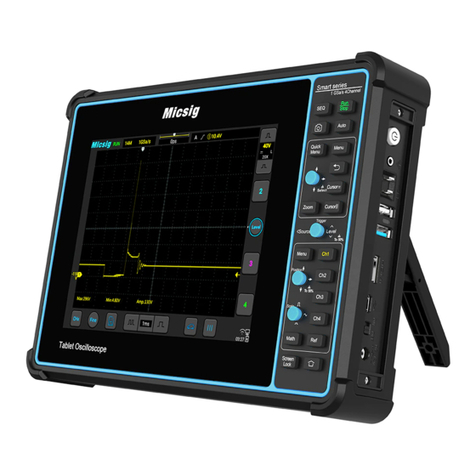3Specification
Model
DP5013 DP10013
Bandwidth
50MHz 100MHz
Rise Time
7ns
3.5ns
Range
Selection
(Attenuation Rate)
50X
500X
50X
500X
Accuracy
±2% ±2%
Maximum
Differential
Test Voltage
(DC+ACPK-PK)
130V(50X)
1300V(500X)
130V(50X)
1300V(500X)
Maximum Input
Common
Mode Voltage
(DC+ACPK-PK)
130V(50X)
1300V(500X)
130V(50X)
1300V(500X)
CMRR
>80dB(DC)
>60dB(100KHz)
>50dB(1MHz)
>80dB(DC)
>60dB(100KHz)
>50dB(1MHz)
Input Impedance
10MΩ/1pF(differential)
5MΩ/2pF (Single -ended
to ground)
10MΩ/1pF(differential)
5MΩ/2pF (Single -ended
to ground)
Output Voltage ≤3V ≤3V
Overrange Alarm
Button light flashes
Button light flashes
Power Supply
DC 5V,USB
Supply
Power
0.85W 0.85W
Dimension
14.5cm*6cm*2.7cm 14.5cm*6cm*2.7cm
Input Cable length
Approx 60cm Approx 60cm
Output Cable length
Approx 90cm Approx 90cm
Operating Temperature
0℃~40℃ 0℃~40℃
Operating Humidity
10%~85% RH 10%~85% RH
Storage Temperature
-30~70℃ -30~70℃
Storage Humidity 5%~90% RH 5%~90% RH
Introduction
The Micsig DP series of high voltage differential probes are designed for
the safe measurement of high voltage and floating voltage signals. Two
models with 50MHz and 100MHz bandwidth are available, each capable of
two different attenuation ranges: 500X for a maximum test voltage of 1300V
and 50X for amaximum test voltage of 130V.
Making Measurements
1) Powering the probe:
Connect the USB input of the probe to the USB port of the oscilloscope
or a suitable USB power source.
2) Connecting the probe to the oscilloscope:
Connect the probe output BNC to the oscilloscope channel input.
Note: make sure the oscilloscope is properly grounded if necessary.
3) Set the appropriate attenuation range according to the measured voltage.
4) Connecting the input to the device under test:
Using the appropriate input accessory, connect the probe to the device
under test to start the measurement. If the attenuation range indicator
flashes (indicating over-range), please immediately disconnect the
power and input.
5) Set the measuring instrument.
1
2
General Usage Summary
Connecting the probe: First, connect the probe's USB power input to a USB
power source such as the oscilloscope's USB port and connect the probe's BNC
connector to an oscilloscope input. Then, set the proper attenuation rate and
connect the probe input to the device under test.
Disconnecting the probe: First, disconnect the probe inputs from the device
under test, and then unplug the probe output and power input.
Use proper grounding: To avoid an electric shock, all devices that require
grounding must be connected to earth ground. Before making connections to
the input or output terminals of the probe, ensure that the test instrument is
properly grounded if necessary.
Measurement safety: Always be aware of the voltage rating of the probe and
the measurement accessories you are using and of the maximum amplitude of
the signal you intend to measure. Never apply a potential that exceeds the
voltage ratings of the probe and/or its accessories to avoi d damag ing the
product and creating a hazardous situation.
Only qualified personnel should perform service on this product.
Do not touch exposed connections and components when power is present.
If an over-range condition occurs, please disconnect power and signal input
from the probe immediately.
Do Not Operate in an Explosive Atmosphere.
Do Not Operate in Wet/Damp Conditions.
Keep Product Surfaces Clean and Dry.
DC 5V,USB Supply
6) When a substantial change in temperature or other circumstances affect
the accuracy of the probe's zero point, a calibration is needed: short the
input terminals of the probe, then power the probe while simultaneously
pressing the 50X and 500X keys for three seconds.
